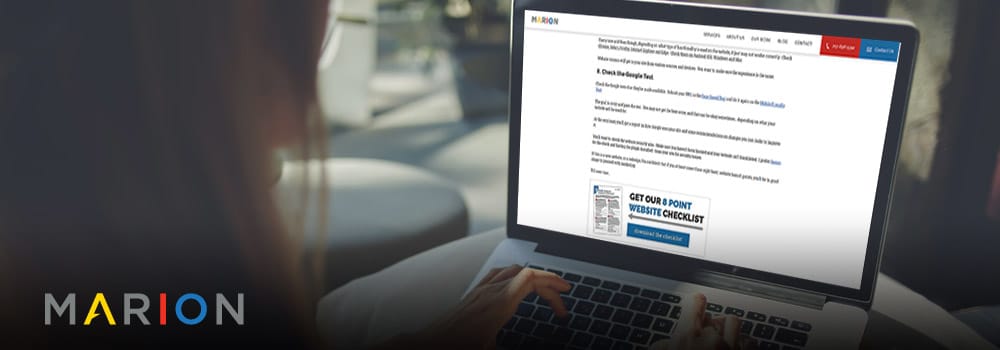Honing your product or service is a key element of running a successful business. However, contrary to Emerson’s adage, simply building a better mousetrap will not cause the world to beat a path to your door.
Today’s world is filled with marketing noise and competition. If you have a service or product that the world will love, you must make sure they’re aware of it before they can patronize your business.
This demonstrates why demand and lead generation are critical to the success of your business, but you need to understand what they are and how they work together.
Demand Gen vs. Lead Gen
It’s common for performance marketers to throw terms like “demand generation,” and “lead generation,” around, even using them interchangeably. While there is a lot of overlap in the goals and tactics used within lead and demand generation, they are distinct marketing processes.
It’s not critical for small business marketers to delineate the two as both functions are frequently managed by one person. However, larger businesses that separate the job functions are looking for employees that have a strength in one or the other. When you use MARION as your outsourced marketing department in Texas, we handle the details for you.
We will dive deeper into the differences in demand creation vs. lead generation in this article. For now, the concepts can be differentiated using these two questions about your audience:
- Do they know who you are?
- Do you know who they are?
If you answer “yes” to question one, but “no” to question two – that’s demand generation.
If you answer “yes” to both questions – that’s lead generation.
You’ve got a fundamental grasp on demand and lead generation already, now take a closer look at what they involve.
What Is Demand Generation Marketing?
Demand generation marketing is the comprehensive process of generating awareness and interest in your business’s product/service through different marketing channels. Demand gen makes up the first touchpoints that a potential customer will have with your business. However, not every person that is reached by your demand creation efforts will continue down your marketing funnel.
The chief aim of B2C and B2B demand generation is to set the stage for an individual to recognize and further engage with your business. Digital marketing KPIs for demand gen include reach, impressions, clicks, and visits. Awareness for the sake of awareness is rarely the goal, especially for small business marketers whose budgets demand they are much more targeted in their efforts.
Some examples of demand gen include blog and social media posts related to your product/service or industry at large that grab the attention of your target audience. We cover more examples of demand generation below.
Demand Generation vs. Marketing in General
Demand generation is a subset of marketing. If you’re familiar with marketing funnels, demand generation is represented by the top of the funnel, while the entire funnel is considered marketing. In short, all demand generation is marketing, but not all marketing is demand generation.
What Is Lead Generation in Marketing?
Lead gen is the process of attracting and stimulating the interest of your target audience to the point that they provide you with their contact information in exchange for something of value. For example, you can convert a stranger from your target audience into a lead by offering them a relevant free whitepaper or checklist in exchange for their name and email address.
Demand generation is a subset of lead generation. Demand gen grabs the initial attention of your target audience, while lead generation aims to grow that attention until contact information can be collected. The driving marketing goal behind lead generation is to fill your business’s sales pipeline so that you can further qualify and convert a lead into a paying customer.
We cover more examples of lead generation in the section below.
Lead Generation vs. Lead Qualification
Just because you’ve generated leads for your business through your site doesn’t mean that your new contact is interested in or capable of becoming a customer. For example, someone can subscribe to your weekly blog because they love learning despite not wanting your product or service. Someone interested in what your business can offer may also not have the budget to work with you.
Lead qualification is the process of connecting with leads, either manually or through an automated system, to see if they are truly a potential customer. Once a lead is qualified, it’s time to begin nurturing them toward a sale.
Lead Generation vs. Business Development
Business development is another function that is frequently mixed up with lead generation. The most important differentiating factor about business development is that it focuses on building strategic relationships to generate customer referrals, whereas lead generation is more of a one-by-one approach to identifying potential customers.
Here’s a situation that will help you draw the line. I used to work at a payroll software company where the marketing team and business development team were entirely separate.
- The marketers tried to attract and convert individual businesses that needed payroll software.
- The business development team tried to connect with accountants that had several business clients that needed payroll software.
Examples of Demand Generation Marketing
Demand generation takes many shapes and sizes. Popular types of demand gen content include but are not limited to the list below.
- Blog posts on your website
- Guest blog posts on external websites
- Case studies
- Podcasts
- Co-marketing with supplementary/complementary businesses
- Videos
- Press releases
- Free tools and resources
- Infographics
- Social media posts
Demand Generation Process
Demand gen can be broken up into two main sections:
- Identifying what content to create
- Determining how to distribute that content to the right audience
The list above are examples of content types that are frequently used for demand gen. The actual information and messaging that you share will require research of your target market and existing customers.
Once you create content assets, how will you distribute them? Most marketing experts recommend considering how your content will be distributed before you create it so you can tailor it to a specific channel.
For example, maybe your plan to get your blogs, videos, and infographics in front of your ideal audience involves targeted social media ads. Make sure your videos are short and engaging enough that a social media user would engage with your message.
Examples of Lead Generation in Marketing
Lead generation requires an offer of perceived value to your target audience. This person has already engaged with your free content, but now it’s time to gain a direct line to their attention. The following lead magnets are common examples of content that will help you earn someone’s contact info.
- Email subscriptions to a blog feed or newsletter
- Gated eBooks, whitepapers, checklists, or cheat sheets
- Webinars
- Product or service demos
- Contests
- Free consultations or product trials
- Free interactive tools relevant to your industry
Lead Generation Process
The process of lead generation requires a significant amount of research. You must have a deep understanding of your target customer and what drives them before you can create content for which they will willingly give you their contact information.
This can be done through competitor research (see what they are offering their audience), or customer surveys and interviews. Once you know what makes them tick, your demand generation efforts must gain enough audience exposure for your lead generation campaigns to seal the deal.
One popular form of lead gen campaign is the retargeting campaign. You can use retargeting display ads and social media ads to put your offer in front of people who have already visited your website but haven’t given you their contact information. The right offer to this already-engaged audience can be just what you need to secure a potential customer’s email address or phone number.
If you’re wondering how long this will take, consider the marketing rule of 7. Age old wisdom says that a stranger will need to see your business branding up to seven times before engaging. If your short term B2C or B2B demand generation campaigns haven’t led helped you generate any leads yet, you may need to accommodate more touches with your brand.
Trust MARION to Generate Interest and Leads for Your Texas Business
MARION has been serving Texas businesses since 1981 and has evolved with the marketing industry to best serve your needs. Our award-winning marketing agency in Texas offers a mix of branding, traditional, and digital marketing services to meet the broad range of needs that face today’s businesses face.
Check out our design portfolio and marketing case studies to see how we’ve helped businesses like yours!
Contact us today to schedule a free consultation and learn how we can help grow your business.





